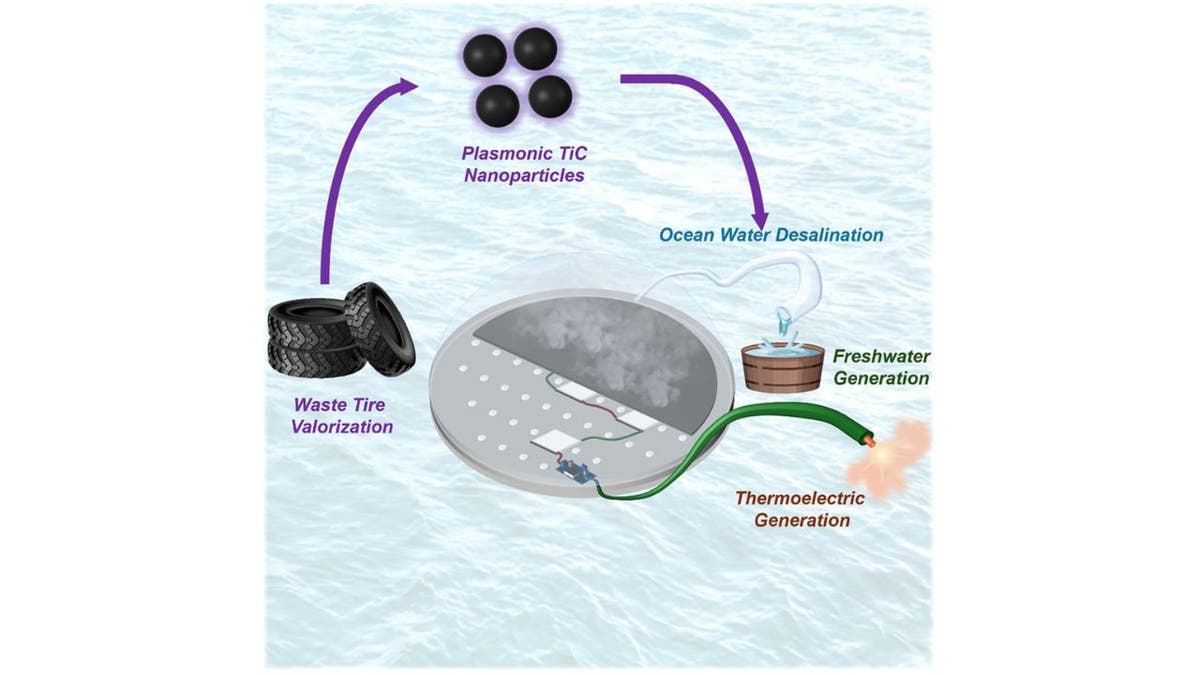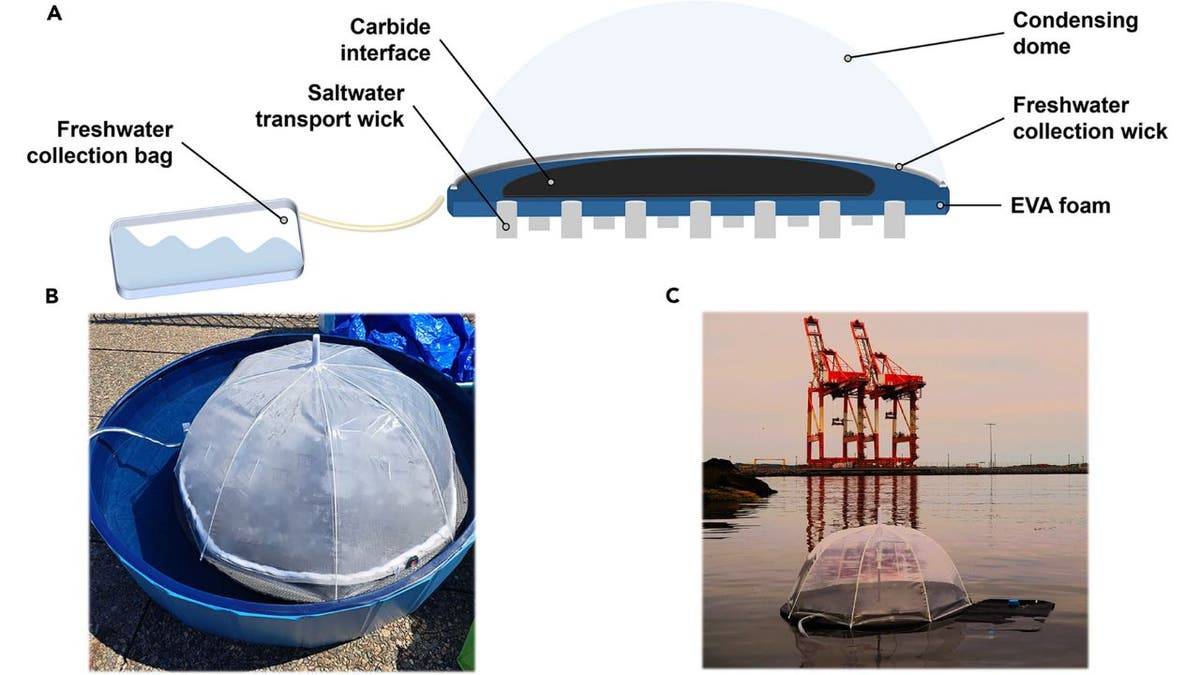Access to clean drinking water, even in remote locations, is becoming a tangible reality thanks to a team of Canadian scientists. Researchers at Dalhousie University have pioneered a floating solar still that uses the sun's power to desalinate seawater, offering a potential solution to global water scarcity.

Floating solar still process (Dalhousie University)
Harnessing Solar Energy for Water Purification
This innovative device utilizes plasmonic nanomaterials, which excel at capturing sunlight and transforming it into heat. This heat drives the desalination process. Dr. Mita Dasog, an associate professor at Dalhousie, explains that this efficient conversion of light to heat is central to the still's effectiveness. The design, originally conceived by Dr. Matthew Margeson, overcomes limitations of previous solar stills by minimizing heat loss, preventing salt accumulation, and withstanding challenging marine environments.

Researcher pictured next to floating solar still (Matthew J. Margeson)
The Desalination Process
The floating solar still employs a straightforward yet powerful purification method. Ocean water is drawn onto the device's foam surface via a wicking system. The plasmonic materials, heated by the sun, evaporate the water, leaving the salt behind. The resulting water vapor condenses on a transparent plastic dome, and the purified water trickles down into a collection bag.
Testing in Halifax Harbour demonstrated the still's impressive performance, producing nearly a gallon of clean water per day – a remarkable achievement for a passive floating solar still.

Floating solar still process (Dalhousie University)
Sustainable Materials and Design
Remarkably, the solar still incorporates recycled materials. Used tires, through a process known as pyrolysis, are converted into a key component of the desalination unit. This approach not only enhances affordability but also addresses the environmental challenge of tire waste, aligning with the team's commitment to accessible and sustainable technology.

Floating solar still process (Dalhousie University)
Multifunctional and Cost-Effective
Beyond purification, the device can simultaneously disinfect and decontaminate water at a minimal cost, less than a penny per liter. It also generates a small amount of thermoelectricity, potentially powering onboard water quality sensors.
Future Implications and Global Impact
With plans for further testing in South Asia, the team aims to make this technology globally accessible. The vision is for this device to aid communities affected by displacement due to conflict or climate change, highlighting its potential to address critical global challenges.








